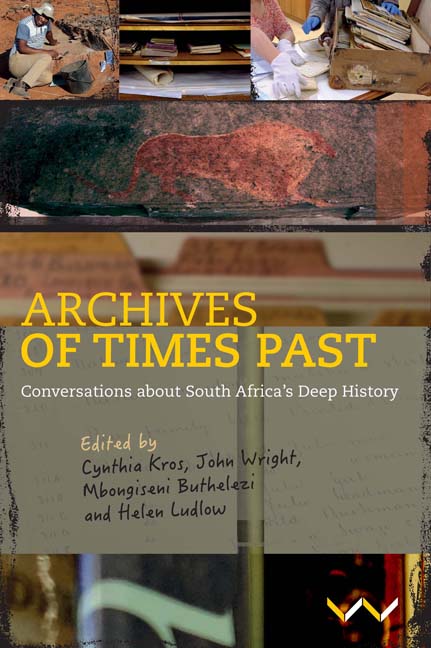Book contents
- Frontmatter
- Contents
- List Of Illustrations
- Acknowledgements
- Editorial Note
- Map
- PART I FIRST THOUGHTS ABOUT THE ARCHIVE
- PART II COMMENTARIES AND CONVERSATIONS
- PART III BECOMING EXPLORERS
- PART IV ENGAGING WITH ARCHAEOLOGY AND ROCK ART
- PART V CONFLICTING OPINIONS
- PART VI FURTHER THOUGHTS
- Glossary
- Contributors
- Index
Chapter 14 - Digging Historic Cave: An Archaeological and Historical Quest
Published online by Cambridge University Press: 26 May 2022
- Frontmatter
- Contents
- List Of Illustrations
- Acknowledgements
- Editorial Note
- Map
- PART I FIRST THOUGHTS ABOUT THE ARCHIVE
- PART II COMMENTARIES AND CONVERSATIONS
- PART III BECOMING EXPLORERS
- PART IV ENGAGING WITH ARCHAEOLOGY AND ROCK ART
- PART V CONFLICTING OPINIONS
- PART VI FURTHER THOUGHTS
- Glossary
- Contributors
- Index
Summary
A CAVE – AND A SIEGE
In the late 1990s, I was a postgraduate student in archaeology at Wits University. An important part of studying archaeology is making field trips to visit sites where archaeologists are busy working, or where they have previously worked. Together with other students, I visited the Makapan Valley, near the town of Mokopane (formerly called Potgietersrus) in the Limpopo Province. It is well known as a place where fossils of human ancestors more than two million years old have been found.
One of the sites in the valley that our lecturers took us to was a cave known as Historic Cave. (It is also known as Makapansgat, or the cave of Gaxasha, or the cave of Gwasha.) The name Historic Cave refers to the historic siege of the Kekana section of the Ndebele people by Boer commandos in 1854. I was vaguely aware of this historical event because I knew that Afrikaner nationalist historians had written accounts of the siege and the events leading up to it. But I knew very little about what they had written. To find out why this story was important for them, I began reading the literature on the subject.
I learnt that, in the 1840s and early 1850s, Boer settlers from the Cape were trying to occupy the region that they called the Transvaal. They raided Ndebele cattle, and frequently seized young people as forced labourers. In 1854, sections of the Ndebele people took a stand to fight back against threats to their independence. Forces of the Kekana and Langa sections attacked and killed parties of Boer traders, hunters and their families that crossed into their territory in the Mokopane area. Knowing that other Boer settlers in the area would take revenge, many Langa people then retreated to a settlement on a hill where they could defend themselves. For their part, a number of Kekana people decided to take refuge in a deep cave in the Makapan Valley.
Two commandos of Boers tracked the Kekana down, and tried unsuccessfully to storm the cave. After one of their number, Piet Potgieter, was shot dead, the Boer leaders decided to besiege the cave. They blocked up all the entrances, and placed parties of armed men to shoot anyone who tried to escape.
- Type
- Chapter
- Information
- Archives of Times PastConversations about South Africa's Deep History, pp. 199 - 210Publisher: Wits University PressPrint publication year: 2022



